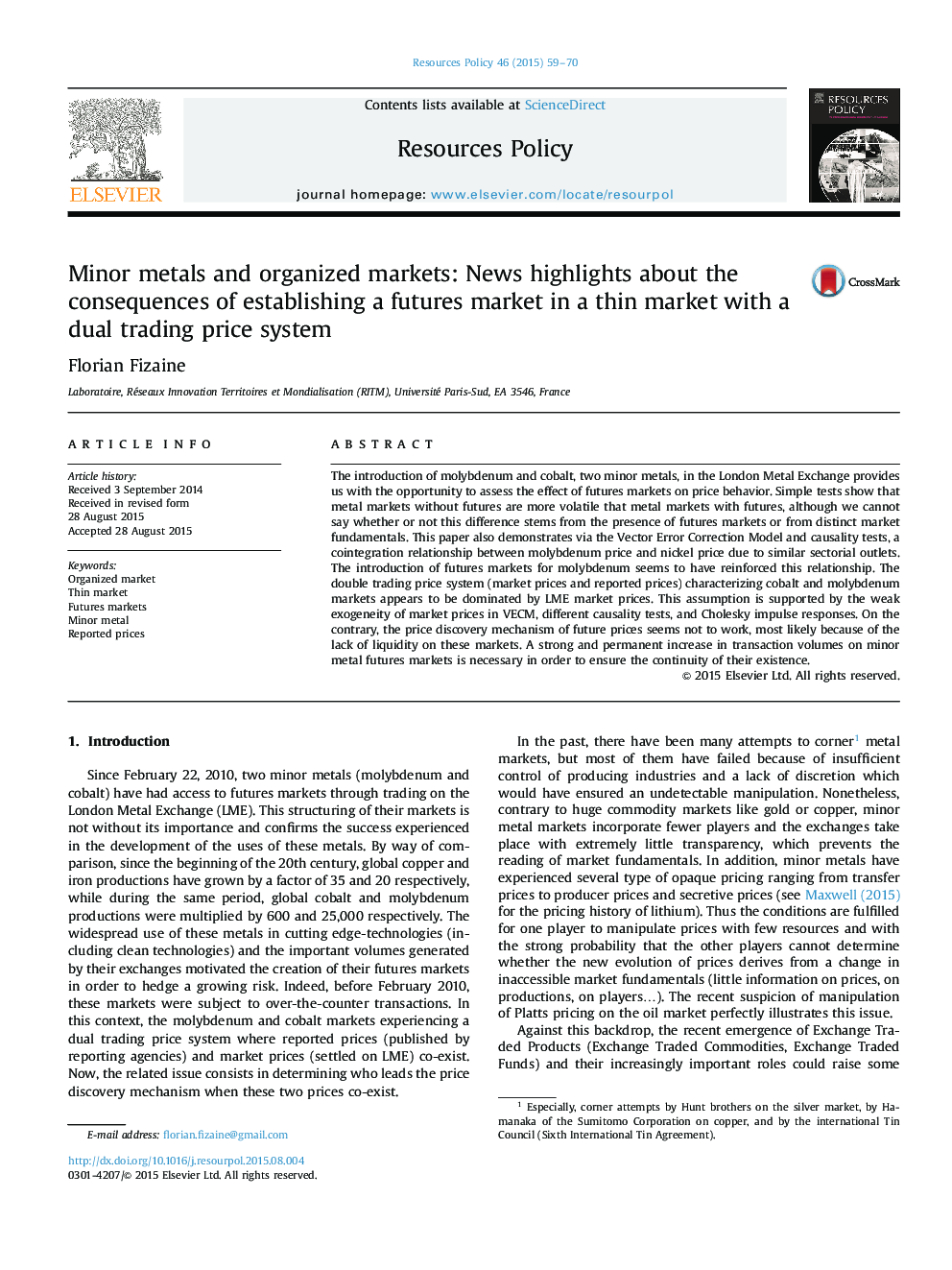| Article ID | Journal | Published Year | Pages | File Type |
|---|---|---|---|---|
| 10483946 | Resources Policy | 2015 | 12 Pages |
Abstract
The introduction of molybdenum and cobalt, two minor metals, in the London Metal Exchange provides us with the opportunity to assess the effect of futures markets on price behavior. Simple tests show that metal markets without futures are more volatile that metal markets with futures, although we cannot say whether or not this difference stems from the presence of futures markets or from distinct market fundamentals. This paper also demonstrates via the Vector Error Correction Model and causality tests, a cointegration relationship between molybdenum price and nickel price due to similar sectorial outlets. The introduction of futures markets for molybdenum seems to have reinforced this relationship. The double trading price system (market prices and reported prices) characterizing cobalt and molybdenum markets appears to be dominated by LME market prices. This assumption is supported by the weak exogeneity of market prices in VECM, different causality tests, and Cholesky impulse responses. On the contrary, the price discovery mechanism of future prices seems not to work, most likely because of the lack of liquidity on these markets. A strong and permanent increase in transaction volumes on minor metal futures markets is necessary in order to ensure the continuity of their existence.
Keywords
Related Topics
Physical Sciences and Engineering
Earth and Planetary Sciences
Economic Geology
Authors
Florian Fizaine,
